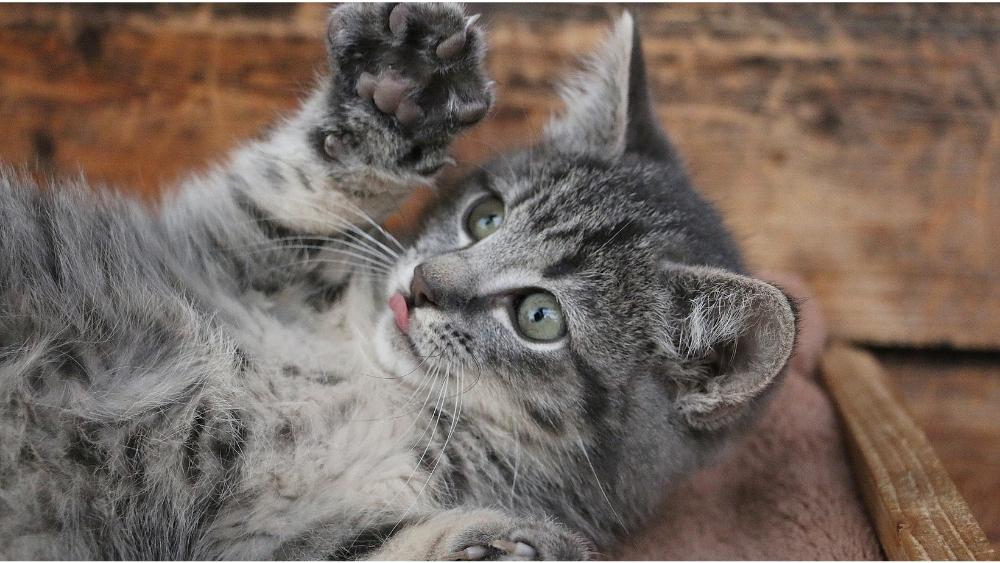Imagine a world where your pet cat or dog could express their thoughts and feelings verbally. While this might sound like the plot of a children's movie, advancements in science and technology are bringing us closer to understanding animal communication than ever before. Talking cats and dogs may not be here yet, but researchers are making strides in decoding the ways animals communicate with humans and each other. This opens up new possibilities for strengthening the bond between humans and their furry companions.
For centuries, humans have lived alongside cats and dogs, forming deep connections based on mutual understanding and trust. However, the ability to truly "talk" with our pets has remained a distant dream. Recent studies, though, suggest that animal communication is far more complex than we previously thought. From vocalizations to body language, our pets are constantly sending us messages. By exploring these methods of communication, we might one day unlock the secrets of talking cats and dogs.
The concept of talking cats and dogs is not just limited to science fiction or fantasy. It represents a broader effort to understand animal cognition and behavior. As we delve deeper into this field, we gain valuable insights into how animals perceive the world and interact with humans. This article will examine the latest research, explore potential technologies, and discuss the ethical implications of bridging the communication gap between humans and their pets.
Read also:1991 Year Of The Goat Element A Comprehensive Guide To Astrology Personality Traits And Life Path
What Does the Science Say About Talking Cats and Dogs?
Scientists have long been fascinated by the idea of talking cats and dogs. Research indicates that animals possess a remarkable ability to communicate through various means, including vocalizations, facial expressions, and body language. For example, studies show that dogs can recognize human emotions and respond accordingly. Similarly, cats use specific meows to communicate with their owners. These findings suggest that the groundwork for talking cats and dogs already exists in nature.
How Close Are We to Making Talking Cats and Dogs a Reality?
Recent breakthroughs in artificial intelligence and machine learning have brought us closer to decoding animal communication. Devices such as wearable sensors and sound analysis software are being developed to translate animal sounds into human-understandable language. While these technologies are still in their infancy, they hold promise for the future. Experts believe that within the next few decades, we might witness the first instances of talking cats and dogs.
Can Talking Cats and Dogs Improve Human-Pet Relationships?
Enhanced communication with pets could revolutionize the way we interact with them. By understanding their needs and emotions better, we can provide more effective care and companionship. Talking cats and dogs could also help address behavioral issues, leading to healthier and happier pets. Furthermore, this technology could foster a deeper emotional connection between humans and animals, promoting empathy and compassion.
What Are the Ethical Considerations of Talking Cats and Dogs?
While the prospect of talking cats and dogs is exciting, it raises important ethical questions. For instance, should we intervene in natural animal communication systems? Could this technology lead to unintended consequences, such as over-reliance on devices or misinterpretation of animal signals? As we explore this field, it is crucial to consider the welfare of animals and ensure that any advancements prioritize their well-being.
What Role Do Talking Cats and Dogs Play in Popular Culture?
From classic cartoons to modern films, talking cats and dogs have captured the imagination of audiences worldwide. These depictions often highlight the humor and charm of animal communication, making them relatable and endearing. However, they also reflect our desire to connect with animals on a deeper level. By examining these cultural representations, we can better understand the societal impact of talking cats and dogs.
How Can Talking Cats and Dogs Benefit Scientific Research?
Studying animal communication offers valuable insights into animal cognition, behavior, and evolution. Talking cats and dogs could serve as a gateway to understanding other species, helping researchers unravel the mysteries of the animal kingdom. Additionally, this research could have practical applications in fields such as veterinary medicine, wildlife conservation, and animal training.
Read also:Chinese Zodiac 1970 Unveiling The Mystical Year Of The Pig
What Challenges Lie Ahead in Developing Talking Cats and Dogs?
Creating technology that enables talking cats and dogs is no easy feat. Researchers face numerous challenges, including deciphering complex vocal patterns, accounting for individual differences among animals, and ensuring the accuracy of translations. Moreover, developing user-friendly interfaces that cater to both humans and animals requires innovative solutions. Overcoming these obstacles will require collaboration between scientists, engineers, and animal behaviorists.
What Can Pet Owners Do to Enhance Communication with Their Talking Cats and Dogs?
Even without advanced technology, pet owners can take steps to improve communication with their animals. Observing body language, listening to vocal cues, and responding appropriately can strengthen the bond between humans and their pets. Additionally, engaging in interactive activities such as training sessions and playtime promotes mutual understanding. These efforts lay the foundation for a future where talking cats and dogs become a reality.
What Is the Future of Talking Cats and Dogs?
As technology continues to evolve, the possibilities for talking cats and dogs seem endless. Imagine a world where your pet can tell you exactly what they need or how they feel. This level of communication would transform the human-animal relationship, fostering greater empathy and cooperation. While we may not see talking cats and dogs in our lifetime, the journey to achieving this goal is already underway.
Table of Contents
- What Does the Science Say About Talking Cats and Dogs?
- How Close Are We to Making Talking Cats and Dogs a Reality?
- Can Talking Cats and Dogs Improve Human-Pet Relationships?
- What Are the Ethical Considerations of Talking Cats and Dogs?
- What Role Do Talking Cats and Dogs Play in Popular Culture?
- How Can Talking Cats and Dogs Benefit Scientific Research?
- What Challenges Lie Ahead in Developing Talking Cats and Dogs?
- What Can Pet Owners Do to Enhance Communication with Their Talking Cats and Dogs?
- What Is the Future of Talking Cats and Dogs?
- Conclusion: The Promise of Talking Cats and Dogs
Conclusion: The Promise of Talking Cats and Dogs
The idea of talking cats and dogs represents a fascinating intersection of science, technology, and human-animal interaction. While we may not yet fully understand the intricacies of animal communication, ongoing research offers hope for the future. By embracing this field with curiosity and responsibility, we can unlock new possibilities for enhancing our relationships with the animals we love. Talking cats and dogs may still be a dream, but the journey to make them a reality is one worth pursuing.
In conclusion, the quest to understand and communicate with animals reflects our innate desire to connect with the natural world. Whether through scientific inquiry, technological innovation, or simple acts of kindness, we have the power to bridge the gap between humans and animals. As we continue to explore the realm of talking cats and dogs, let us remember the importance of respecting and valuing the creatures that share our lives.


